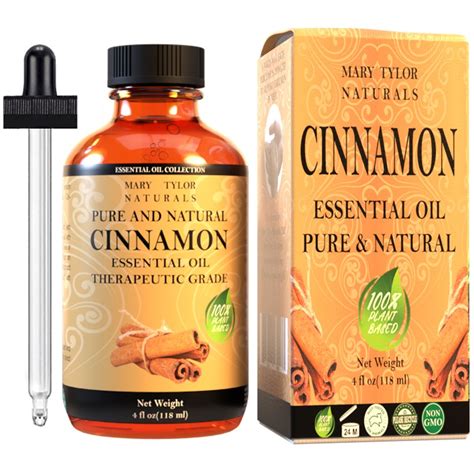Cinnamon Essential Oil: Benefits and Uses
Cinnamon Essential Oil FAQ
What is cinnamon essential oil?
Perhaps we were getting ahead of ourselves, so first, let's get clear on the basics: Cinnamon essential oil is, drumroll, please, essential oil made from cinnamon. But, there are two variations that you want to look out for.
What are the ingredients in cinnamon essential oil?
The major active components of cinnamon essential oil taken from the bark are cinnamaldehyde, eugenol, and linalool. These three make up about 82.5 percent of the oil’s composition. The primary ingredient of cinnamon essential oil depends upon which part of the plant the oil comes from: cinnamaldehyde (bark), eugenol (leaf) or camphor (root). ( 3)
How do you use cinnamon essential oil?
It’s very important to dilute cinnamon oil with a carrier oil, prior to use. Try using one drop of cinnamon essential oil to two or more cups of a carrier oil, such as olive, almond, jojoba, or sesame oil. Never rub or massage cinnamon oil directly on skin unless it’s diluted with a carrier oil.
What are the health benefits of cinnamon oil?
Many of the benefits of cinnamon bark oil have to do with its ability to dilate blood vessels. Cinnamon bark can help enhance nitric oxide function, which causes increased blood flow and lower levels of inflammation. ( 4) Some of the most researched health benefits of cinnamon oil include: What is cinnamon essential oil used for?
Cinnamon Essential Oil References
If you want to know more about Cinnamon Essential Oil, consider exploring links below:
What Is Cinnamon Essential Oil
- https://www.healthline.com/health/cinnamon-oil
- https://draxe.com/essential-oils/cinnamon-oil/
- https://www.hollandandbarrett.com/the-health-hub/vitamins-and-supplements/supplements/what-does-cinnamon-do/
- https://naturallivingonline.com/essential-oils/cinnamon-essential-oil-a-guide-to-benefits-uses-and-side-effects/
- https://www.aromaweb.com/essential-oils/cinnamon-essential-oil.php
- https://volantaroma.com/blogs/guides/cinnamon-essential-oil-guide
- https://www.essentialoils.life/cinnamon-essential-oil/
- https://www.wellandgood.com/cinnamon-essential-oil-benefits/
- https://elevays.com/cinnamon-essential-oil-benefits/
- https://momprepares.com/essential-oils/cinnamon/
Cinnamon Essential Oil Information
Explore Related Topics
Exploring Aromatherapy Blends for Diabetes Support
Investigate the use of specific essential oil blends in supporting diabetes management holistically.
Can Aromatherapy Help Manage Diabetes Symptoms Naturally?
Explore the potential benefits of using aromatherapy as a complementary treatment for diabetes.
